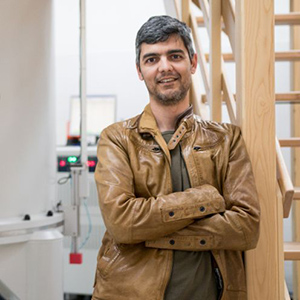In the EU-funded NER (Structural studies of Nucleotide Excision Repair for drug development targeting protein-DNA interactions) project we set out to resolve the human defense against UV radiation and carcinogens at the molecular level. We studied the rate-limiting step of NER, the DNA incision made by XPF/ERCC1 and the role of XPA and RPA proteins in this process. We were successful in (i) optimizing the DNA substrates for XPF/ERCC1 and probing DNA binding by NMR and other biophysical methods, (ii) collecting NMR data on XPF/ERCC1-XPA complex, (iii) establishing a purification protocol for RPA heterotrimer. These advancements have been made possible by a wealth of techniques available at CEITEC MU (NMR, SAXS, ITC, AUC, FA, CE).
“We have characterized a minimal XPF/ERCC1 heterodimer that recapitulates the findings reported on full-length protein and cleaves all DNA structures containing ds/ss junctions at exactly the same position in the duplex portion. We have been able to dissect catalytic activity and DNA binding by using different divalent cations in the reaction mixture and measure binding constants by using Fluorescence Anisotropy. We have adopted a fluorescence-based assay to measure the catalytic rates and have screened a library of 60.000 compounds to obtain hits that inhibit XPF/ERCC1 catalytic function,” explains Konstantinos Tripsianes, Research Group Leader at CEITEC MU. This is the first systematic effort to identify specific XPF/ERCC1 inhibitors, that have yet to be validated with additional assays, in order to exploit DNA-repair deficiency in cancer treatment.
“For the screening and structural studies we had to troubleshoot protein aggregation that occurred upon concentration. However, using a combination of SAXS and NMR, we have established conditions and have been able to obtain monodisperse species at suitable concentrations,” adds Tripsianes. This is a major step forward and may explain the lack of structural data on XPF/ERCC1 heterodimer and NER complexes in general. Now the researchers have everything in their hands to start resolving the NER machine at the molecular level.
 The research leading to these results has received funding from the People Programme (Marie Curie Actions) of the European Union's Seventh Framework Programme (FP7/2007-2013) under REA grant agreement n° 618223.
The research leading to these results has received funding from the People Programme (Marie Curie Actions) of the European Union's Seventh Framework Programme (FP7/2007-2013) under REA grant agreement n° 618223.








